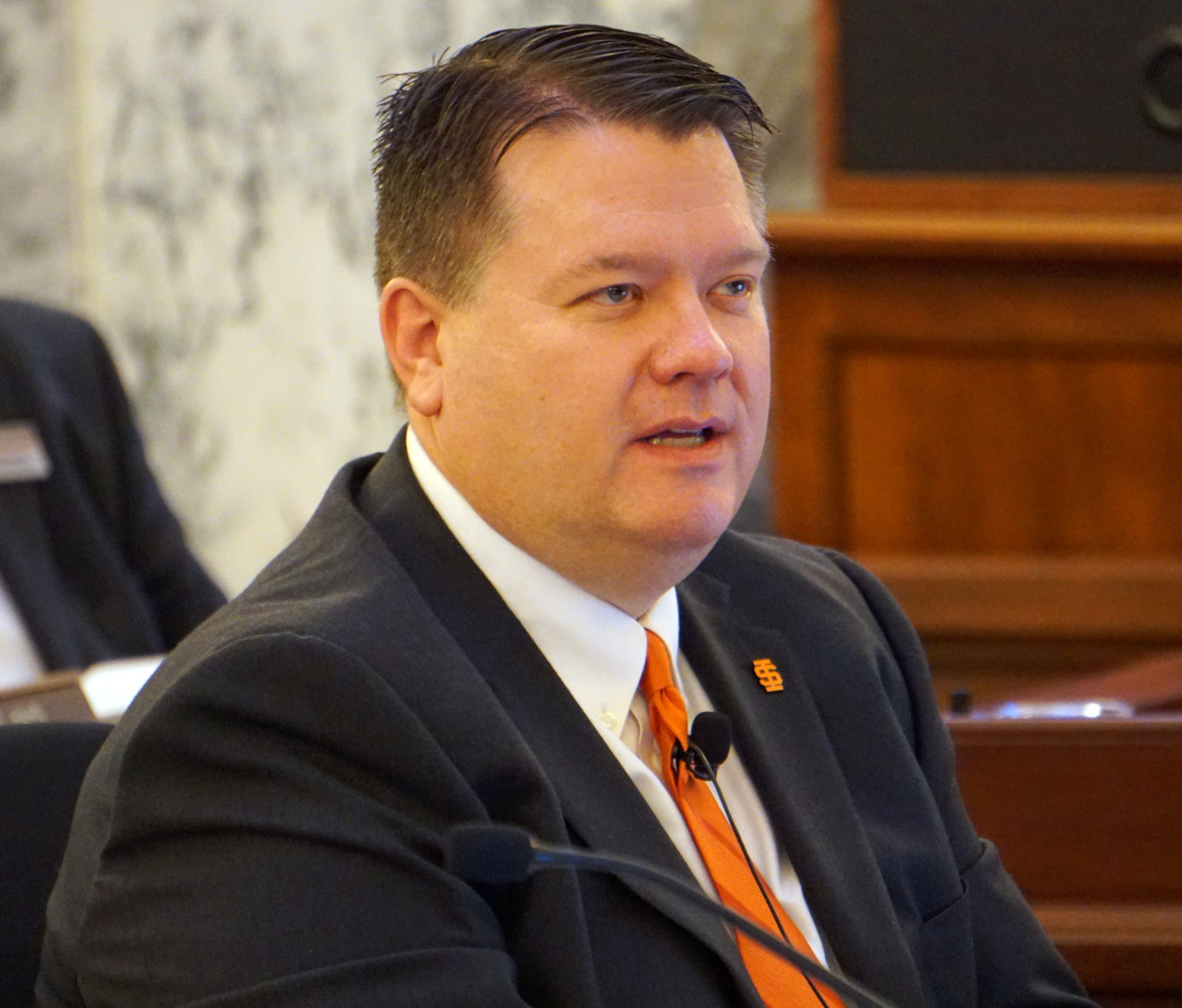Idaho’s two new higher education presidents made their first budget pitches Tuesday — but also touted the importance of college.
Speaking to the Legislature’s Joint Finance-Appropriations Committee, Idaho State University President Kevin Satterlee and Lewis-Clark State College President Cynthia Pemberton spoke of their own experiences as first-generation college students.

Said Pemberton, who came from a low-income household and attended college as a student-athlete. “(I) would not be here today if educational opportunity had not been available.”
A year ago, Satterlee and Pemberton weren’t in their current posts. Satterlee was vice president and counsel at Boise State University, Pemberton was vice president for academic affairs at Colorado Mesa University. The State Board of Education hired both new presidents in April, after the Legislature had wrapped up its work for 2018.
Tuesday’s business at hand was the budget request for 2019-20.
Overall, Gov. Brad Little is seeking a 2.9 percent general fund increase for the state’s college and university system. The numbers vary somewhat from school to school. ISU would be in line for a 2.4 percent increase; Lewis-Clark would receive a 2.1 percent increase.
The presidents talked more about their institutions’ successes — and a little bit about their challenges.

Satterlee said ISU’s current six-year graduation rate is 33 percent, up from 29 percent six years ago. But he cautioned against reading too much into the raw numbers, sharing two anecdotal stories with legislative budget-writers.
He talked about one recent student who received a soil biology degree in four years, and another student who juggled full-time work with college, taking seven years to get her degree. The student who graduated on time decided she didn’t care for biology, and now works part-time as a bank teller. The student who took seven years to graduate is now working in her field of study. She’s a success story, Satterlee said, “(but) a success that will not show up in our four- and six-year graduation rates.”
Satterlee acknowledged an ongoing challenge for ISU: declining enrollment, driven in part by a loss of students from the Middle East. ISU’s fall student headcount has dropped by more than 5 percent, while student numbers are up at Boise State University, the University of Idaho and Lewis-Clark. Satterlee didn’t lay out a detailed plan for addressing the problem, but he said the State Board has made it one of his priorities.
Later Tuesday, speaking to the Senate Education Committee, Satterlee painted a more optimistic picture of enrollment. As ISU tries to do a better job of serving Eastern Idaho, the in-state enrollment numbers are healthy. The numbers might still dip in the near future, but the long-term trends are more promising.
“it seems like we are starting to move that needle in the right direction,” he said. “It feels like we are properly addressing that trend.”
Pemberton touted Lewis-Clark’s accessibility and affordability.
Seventy-three percent of Lewis-Clark’s students are first-generation college students — and this demographic comprises 61 percent of the students on the college’s fall honor roll. With annual tuition and fees of $6,620 for in-state students, Lewis-Clark’s costs are $800 to $1,200 less than the state’s four-year universities.
Consequently, she said, only 55 percent of Lewis-Clark’s graduates take out student loans, and these students leave with about $19,000 of debt. Both numbers are well below overall state averages, according to a September study from The Institute for College Access and Success.
But under questioning from Rep. Paul Amador, R-Coeur d’Alene, Pemberton said her college will need a technology upgrade, to serve students on the Lewiston campus and in satellite settings in Coeur d’Alene, Grangeville and Orofino. Lewis-Clark sought a $1.1 million line item to replace technology, but Little did not sign on.
“We can’t stay stagnant too long when it comes to technology,” she said.
The state has put money into capital outlays in past years, said David Hahn of the state’s Division of Financial Management, but Little was forced to pare down budget requests due to a slowdown in personal income tax collections. “The governor understands these are necessary items … but we can only stretch things so far.”
Still, Tuesday’s presentations sometimes felt like a get-acquainted session.
Sen. Dan Johnson, R-Lewiston, asked Lewis-Clark student body president Sam Weeks to take to the microphone to field a couple of questions. Weeks was decidedly political; he was noncommittal about whether he will stay in state for graduate school, and said it’s too early to know if he will work in Idaho.
And Sen. Steve Bair, a Blackfoot Republican and JFAC’s Senate co-chair, made a point of praising the new president of his neighborhood university.
“I think the State Board has chosen well in choosing you,” Steve Bair, told Satterlee.
Tuesday was the second day of “Education Week” in JFAC, with budget sessions focused on K-12 and higher education. By week’s end, budget-writers will hear from state superintendent Sherri Ybarra, outgoing U of I President Chuck Staben and interim Boise State President Martin Schimpf.
